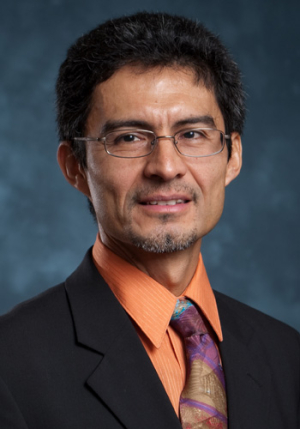The world’s leading figures in the field of brain-machine interfaces (BMI) will gather in Houston next February to map the quickest route for bringing brain-controlled prosthetics to clinical patients.
The International Workshop on Clinical Neural Brain-Machine Interface Systems is being chaired by Jose Luis "Pepe" Contreras-Vidal, professor of electrical and computer engineering with the University of Houston Cullen College of Engineering. Co-hosting the event along with UH are The Methodist Hospital Research Institute and The Institute for Rehabilitation and Research, part of the Memorial Hermann hospital system. The event has commitments of financial support from the National Institutes of Health (NIH) and it is expected that other leading agencies, companies in the neurotechnology industry, and organizations will also sponsor the workshop.
According to Contreras-Vidal, while the technology behind brain-controlled prosthetics is advancing, it’s unclear exactly how researchers, clinicians, industry and regulators should partner to make these devices widely available as quickly as possible.
"There are many demonstrations, but it’s very hard to get this technology to the patients in the clinic," he said. "The goal of the conference is to create a roadmap for all the stakeholders to follow."
Kip Ludwig, program director in repair and plasticity at the National Institute of Neurological Disorders and Stroke, agrees. “The field must move from cool proof-of-concept demonstrations in the lab or clinic to easy and robust use that is meaningful to the patient in the home.”
The roadmap to be developed at the workshop, Contreras-Vidal said, will address topics such as the exact clinical needs for brain machine interfaces; the best approaches for implementing and validating BMI systems technology for clinical applications; and the challenges and potential solutions to scientific, engineering and regulatory hurdles facing the clinical use of BMI systems.
According to Contreras-Vidal, the workshop will be an invitation-only event, with approximately 100 of the world’s top neural interface researchers, clinicians, engineers, government officials, industry leaders and regulators gathering to address these topics. A limited number of travel fellowships for junior faculty and students will be available through the support of the NIH.
In order to encourage dialog and collaboration, the workshop’s program will center on short presentations with technology demonstrations by leading researchers and companies and audience-driven discussions, with content provided by the participants themselves – the so-called unconference format, said Contreras-Vidal.
Following the event, students and faculty from some of the nation’s top science writing programs will be tasked with putting the agreed-upon roadmap to paper. Once finalized, the document will be submitted for publication to leading journals in the field of brain machine interfaces and neural prostheses, Contreras-Vidal said.
In addition to helping spur the work of the BMI sector, Contreras-Vidal said the event should have an added bonus: showing Houston and UH as major emerging centers of clinical and laboratory research in this field.
"This event is important for the visibility of Houston and UH. We want to highlight the area and show that this is one of the best places for translational work on brain-machine interfaces."
For further information, please contact jlcontreras-vidal [at] uh.edu (Contreras-Vidal) or visit the workshop website.
